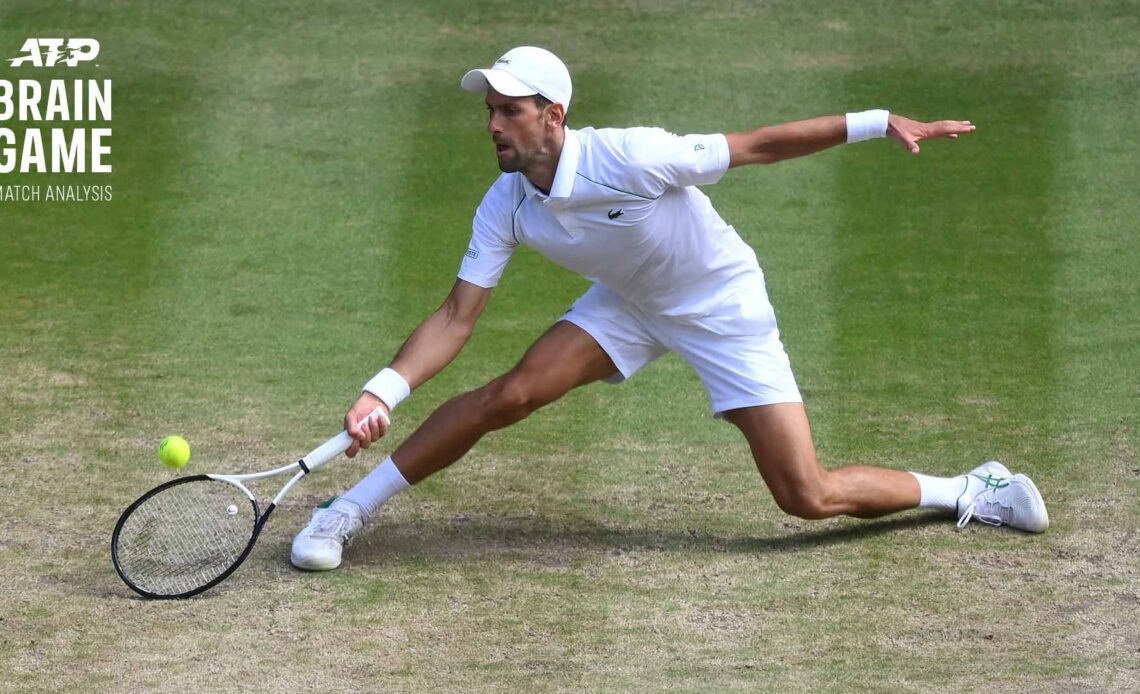The longest rally had the biggest effect on the final outcome.
Novak Djokovic defeated Nick Kyrgios 4-6, 6-3, 6-4, 7-6(3) in the Wimbledon final on Sunday, turning around his fortunes early in the second set by finding his consistency and rhythm in a 23-shot rally when serving at 1-1, 30/30. It was the longest point of the match, and the exact tonic Djokovic needed to reinvigorate his game after dropping the opening set. He won that long point and a 19-shot rally on the next point at 40/30.
Those two points were the dividing line in the match. They signaled exactly when the momentum shifted and where Djokovic took control of the match with his championship mojo. The following breakdown identifies the change in fortunes in extended rallies before this moment in time and after it.
Rallies Of 9+ Shots
- First 8 Rallies (Up to 1-1, 30/30, Second set): Kyrgios won 7/Djokovic won 1
- Rest Of The Match: Kyrgios won 3/Djokovic won 16
Djokovic Wins Wimbledon, Extends ‘Big Titles’ Lead
Djokovic’s confidence was suddenly brimming after hammering home his advantage in longer rallies, and he broke Kyrgios’ serve to love in the next game. It was the first time Djokovic had broken Kyrgios in just more than five sets of tennis, dating back to their two matches in 2017, which the Australian won. Breaking serve broke the focus and concentration of Kyrgios, whose body language became increasingly irritated for the remainder of the match.
Djokovic only won 36 per cent (4/11) of all rallies that went five shots or longer in the opening set, but that escalated to 63 per cent (36/57) over the remaining three sets as Djokovic figured out it was far better to grind with Kyrgios than go toe-to-toe with him playing first-strike tennis.
Djokovic craved baseline exchanges and his winning percentage from the back of the court proves his plan worked to perfection.
Baseline Points Won
- Djokovic: 63% (61/97)
- Kyrgios: 33% (33/100)
Djokovic won almost double (61-33) the number of points when he finished the point at the back of the court compared to Kyrgios. His primary target was to go after Kyrgios’ forehand out wide in the Deuce court, breaking it down by making the Australian repeatedly have to hit his forehand on the run. Djokovic only committed 14 forehand errors for the match, while Kyrgios notched 41.
It is important to note that the final, like most matches on Tour, was not…
Click Here to Read the Full Original Article at Tennis – ATP World Tour…

